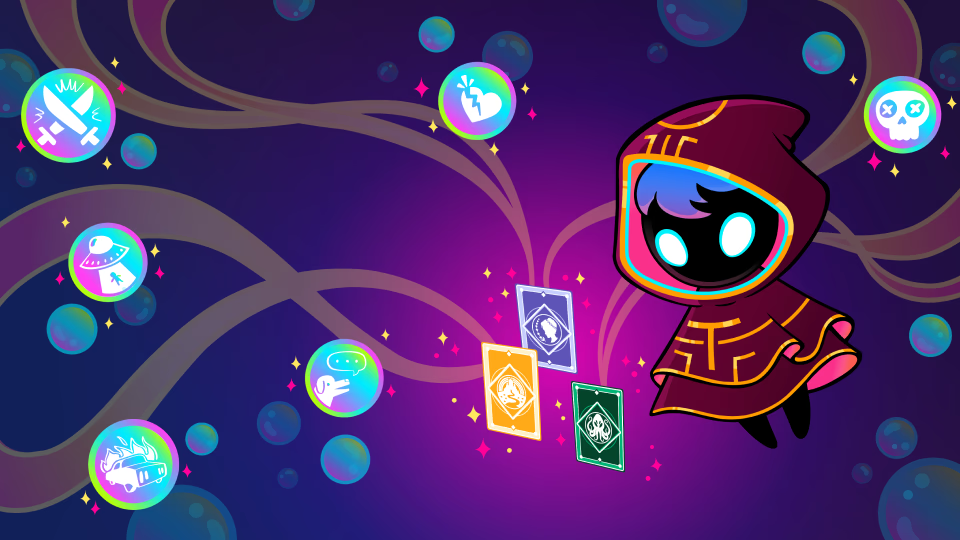
Hidden Door: An AI storytelling platform in early access that enforces in‑world limits
Sources: https://www.theverge.com/games/757816/hidden-door-early-access-ai-story, theverge.com
TL;DR
- Hidden Door is an early‑access platform that cowrites choose‑your‑own‑adventure stories with an AI narrator.
- It leverages public‑domain worlds and licensed works such as The Wizard of Oz, Pride and Prejudice, and The Crow, and it locks some storytelling options to keep the narrative within the world’s logic.
- Players create a character, flesh out backstory and traits, and respond to an opening scenario; dice rolls can influence outcomes and the story progresses accordingly.
- The system uses cards for characters and locations, plus a narrator deck of plot points to guide the flow.
- Compared with general chatbots like ChatGPT, Hidden Door imposes in‑universe limits to avoid instant, power‑fantasy wins, offering a more structured storytelling experience.
Context and background
Years before the current wave of generative AI. OpenAI technology powered a game called AI Dungeon 2 that let players improvise open‑ended stories with an AI narrator. Hidden Door builds on that legacy but introduces a structured, world‑based approach, placing limits on what players can write to keep narratives coherent within the chosen universe. The platform is now in early access and features familiar, licensed settings — including The Wizard of Oz and Pride and Prejudice — plus The Crow, which it has licensed. Players start by creating a character, detailing backstory, and specifying notable traits; the system then offers an opening scenario and you respond under the guidance of the AI narrator. The Verge
What’s new
Hidden Door emphasizes collaborative storytelling within established universes rather than free‑form improvisation. Key aspects include:
- Character creation and backstory input, with notable traits guiding the narrative.
- An opening scene generated by the AI narrator, followed by player responses that shape the path of the story.
- A dice‑roll mechanic for certain decisions, where success or failure influences the subsequent narration.
- A card system that collects characters and locations you can reference later as a refresher for important moments.
- A narrator deck of plot points you can draw from to steer the story toward new threads.
- Licensing and public‑domain usage to ensure stories you play through aren’t infringing on copyright, with worlds like The Wizard of Oz, Pride and Prejudice, and The Crow available. Hidden Door explicitly aims to work with authors involved in the process. The Verge
Why it matters (impact for developers/enterprises)
Hidden Door offers a case study in balancing creative AI storytelling with licensing, copyright considerations, and narrative coherence. By grounding adventures in public‑domain and licensed works, the platform avoids some copyright concerns that can arise with open‑ended AI generation on unbounded prompts. For developers, it demonstrates how structured constraints — such as a fixed world logic, character backstories, and dedicated plot‑point cards — can guide user interactions and improve narrative cohesion. The approach contrasts with general chatbots that may generate unconstrained or inconsistent results when asked to rewrite famous stories or invent new, powerful artifacts on the fly. The experience also highlights the value of a narrative “game master” style role for AI, where the AI sets the scene, imposes logical limits, and nudges players toward information gathering or story progression rather than power moves. The Verge
Technical details or Implementation
The platform blends user input with a structured storytelling framework to manage the narrative flow.
- You create a character, establish backstory, and define traits that influence how the AI narrator responds.
- The AI narrator presents an opening scenario and then reacts to your choices, occasionally using dice rolls to determine outcomes. The story continues regardless of success or failure, but the path changes accordingly.
- You collect cards that catalog characters and locations to reference later, functioning as a built‑in memory for the ongoing tale.
- The narrator has its own deck of plot points that can be selected to guide where the story heads next.
- Unlike free‑form AI chat, Hidden Door imposes in‑universe limits on what you can write, nudging you toward information gathering, dialogue, or other narrative devices instead of letting you trivially “win” with a single magical item or unbeatable tactic. In one observed Pride and Prejudice variant with vampires, for instance, attempts to craft an overpowering artifact were curtailed, and the game encouraged social gambits and investigation instead. The experience also includes occasional glitches, such as long thinking times and an instance of copied text appearing in‑story, which the reviewer noted among rough edges. The Verge
Table: Key distinctions (Hidden Door vs. a general chatbot)
| Feature | Hidden Door | General Chatbot |---|---|---| | Narrative constraints | In‑universe rules guide progress | Often unconstrained by world rules |Content licensing | Uses public domain and licensed works | Licensing varies; not always clear |Content memory | Character/locations cards provide persistent references | Less structured memory of past interactions |AI role | Narrator deck guides plot points | Free generation with fewer structure cues |Interaction style | World‑driven, quest‑like progression | Open‑ended text generation |
Key takeaways
- Hidden Door presents a structured alternative to free‑form AI storytelling by anchoring narratives in licensed and public‑domain worlds.
- The system combines character creation, opening scenarios, dice‑driven outcomes, and a deck of plot points to guide narrative progression.
- Its design aims to preserve narrative coherence within a chosen universe while still offering player agency.
- Early experiences note both engaging moments and rough edges, such as long AI response times and occasional content glitches.
- For those exploring AI storytelling UX, Hidden Door demonstrates how explicit constraints and a “game master” approach can shape player immersion.
FAQ
-
What is Hidden Door and how does it work?
It is an early‑access platform where players co‑write choose‑your‑own‑adventure stories with an AI narrator, using character backstories, opening scenarios, and a narrator‑led progression that can involve dice rolls and plot cards. [The Verge](https://www.theverge.com/games/757816/hidden-door-early-access-ai-story)
-
Which worlds can be used in Hidden Door?
The platform includes public domain settings like The Wizard of Oz and Pride and Prejudice, as well as The Crow, all licensed for play. [The Verge](https://www.theverge.com/games/757816/hidden-door-early-access-ai-story)
-
How does the AI narrator influence the narrative?
The narrator proposes opening scenarios, responds to player decisions, and may draw from a deck of plot points to steer story direction, while enforcing in‑world limits. [The Verge](https://www.theverge.com/games/757816/hidden-door-early-access-ai-story)
-
What distinguishes Hidden Door from a generic chatbot?
It restricts options to fit within the story’s universe, relies on cards and dice for structure, and emphasizes cohesive narrative progression rather than unlimited power moves. [The Verge](https://www.theverge.com/games/757816/hidden-door-early-access-ai-story)
References
- The Verge. Hidden Door is an AI storytelling game that actually makes sense. https://www.theverge.com/games/757816/hidden-door-early-access-ai-story
More news
First look at the Google Home app powered by Gemini
The Verge reports Google is updating the Google Home app to bring Gemini features, including an Ask Home search bar, a redesigned UI, and Gemini-driven controls for the home.
Meta’s failed Live AI smart glasses demos had nothing to do with Wi‑Fi, CTO explains
Meta’s live demos of Ray-Ban smart glasses with Live AI faced embarrassing failures. CTO Andrew Bosworth explains the causes, including self-inflicted traffic and a rare video-call bug, and notes the bug is fixed.
OpenAI reportedly developing smart speaker, glasses, voice recorder, and pin with Jony Ive
OpenAI is reportedly exploring a family of AI devices with Apple's former design chief Jony Ive, including a screen-free smart speaker, smart glasses, a voice recorder, and a wearable pin, with release targeted for late 2026 or early 2027. The Information cites sources with direct knowledge.
Shadow Leak shows how ChatGPT agents can exfiltrate Gmail data via prompt injection
Security researchers demonstrated a prompt-injection attack called Shadow Leak that leveraged ChatGPT’s Deep Research to covertly extract data from a Gmail inbox. OpenAI patched the flaw; the case highlights risks of agentic AI.
How chatbots and their makers are enabling AI psychosis
Explores AI psychosis, teen safety, and legal concerns as chatbots proliferate, based on Kashmir Hill's reporting for The Verge.
Google expands Gemini in Chrome with cross-platform rollout and no membership fee
Gemini AI in Chrome gains access to tabs, history, and Google properties, rolling out to Mac and Windows in the US without a fee, and enabling task automation and Workspace integrations.





